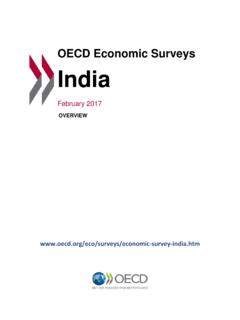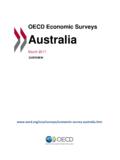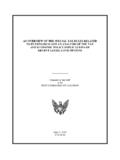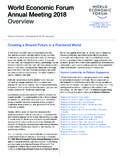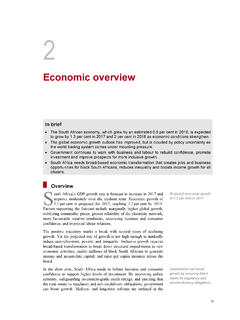Transcription of Economic overview - National Treasury
1 2. Economic overview In brief The global Economic growth outlook has weakened in recent months, led by a sharp slowdown in developing countries. The outlook for the South African economy has also deteriorated as a result of lower commodity prices, higher borrowing costs and diminished confidence. Currency weakness is putting upward pressure on inflation and the agriculture sector is suffering the effects of a severe drought. GDP growth is expected to improve gradually over the medium term, reaching per cent in 2018. Despite these challenges, South Africa has many strengths on which to build. A strong institutional framework promotes accountability and transparency. Prudent fiscal and monetary policies anchor a sustainable approach to the public finances and keep inflation in check. The private sector is innovative and the sophisticated services sector supports growth. Government recognises the need to boost confidence and strengthen investment, including by promoting co-investment in capital projects, and improving policy certainty and the ease of doing business.
2 Over the period ahead, government will strengthen its partnerships with the private sector, labour and civil society, to speed up the Economic transformation envisioned in the National Development Plan. overview T. he outlook for the world economy has deteriorated in recent Downward revisions to months. The moderate recovery in advanced economies remains Economic growth in uneven, and developing economies have been experiencing broad developing countries downward revisions to growth. Expectations of higher US interest rates and concerns about the resilience of China and other large developing economies have led to greater volatility in global capital flows. Commodity prices remain low. In combination, these conditions are adversely affecting financial markets, reducing risk appetite and tolerance for further build-up of public and corporate debt, particularly in developing countries. South Africa's GDP growth forecast for 2016 has been revised down to per cent from an estimated per cent at the time of the Medium Term Budget Policy Statement (MTBPS).
3 The weaker outlook is the result of 13. 2016 BUDGET REVIEW. lower commodity prices, higher borrowing costs, diminished business and consumer confidence, and drought. Although GDP growth is forecast to remain subdued in 2016 and 2017, improved global conditions and rising confidence are expected to result in a moderate improvement in Economic growth by 2018. Reforms under way to Government is strengthening its collaboration with the private sector, encourage private labour and civil society, to speed up implementation of the structural investment reforms set out in the National Development Plan. Public-sector infrastructure spending over the medium term is expected to total billion. Government intends to roll out major partnerships with independent power producers in gas and coal over the next several years, boosting investment and energy supply. Several regulatory reforms will encourage greater private investment and improve the ease of doing business.
4 Fiscal measures over These and other measures are needed to enable the economy to grow more medium term to narrow rapidly as Economic conditions improve. Over the medium term, fiscal budget deficit measures to narrow the budget deficit and stabilise the growth of public debt, complemented by the inflation-targeting framework, will contribute to renewed confidence and greater investment. Global Economic outlook Global Economic growth In January of this year the International Monetary Fund (IMF) lowered its projection lowered to 2016 projection for global Economic growth from per cent to per cent per cent, following growth of per cent in 2015. Global trade forecasts have also been reduced. Risks remain that growth could be even lower. Developed economies, which are generally more insulated from the negative effects of commodity price shocks, continue to expand at a moderate pace, but progress is uneven.
5 Table Annual percentage change in GDP and consumer price inflation in selected regions/countries, IMF forecasts, 2014 2017. Region/country 2014 2015 2016 2017 2014 2015 2016 2017. Percentage GDP projections1 CPI projections2. World Advanced economies United States Euro area United Kingdom Japan Emerging markets and developing economies Brazil Russia India China Sub-Saharan Africa South Africa South Africa ( National Treasury forecast) 1. IMF World Economic Outlook Update, January 2016. 2. IMF World Economic Outlook, October 2015. 14. CHAPTER 2: Economic overview . Economic forecasts for some of the largest developing economies have Oil prices now at levels last been revised down. China's shift towards greater domestic consumption seen in 2004. and less debt-fuelled investment has reduced headline growth in the world's second-largest economy and, as a consequence, global growth and commodity prices.
6 Brazil and Russia are forecast to remain in recession in 2016 as low commodity prices prompt painful Economic adjustments. Oil prices have fallen by 50 per cent since December 2014 and are now at levels last seen in 2004. Gold and platinum have reversed the gains made since 2010; in US dollar terms, they are now 10 per cent and 30 per cent lower respectively than a year ago. The growing importance of developing markets for the global economy has widened their impact: the World Bank estimates that a one percentage point decline in growth in the BRICS countries (Brazil, Russia, India, China and South Africa) can reduce near-term global growth by up to percentage points. GDP growth in sub-Saharan Africa is expected to reach 4 per cent in 2016, Although Africa remains one up from per cent in 2015. Although it remains one of the world's of world's fastest-growing fastest-growing regions, low commodity prices and higher borrowing costs regions, growth has have reduced growth expectations in recent months and created fiscal moderated strains, notably in oil-exporting countries.
7 Slower growth and weaker risk appetite are resulting in currency depreciation and reduced capital inflows for many developing countries. According to the Institute of International Finance, emerging market capital outflows reached about $735 billion in 2015. Uncertainty over monetary policy in advanced economies including the impact of negative real interest rates will likely contribute to global volatility over the forecast period. The South African economy South Africa's GDP growth is expected to slow marginally from per cent in 2014 to per cent in 2015. Sector performance During 2015 the services sector remained resilient and the mining sector recovered from protracted strikes in 2014. Their performance, however, did not fully offset difficult conditions in agriculture, manufacturing and other secondary sectors. The services sector financial and business services, wholesale and retail Financial and business trade, hotels and restaurants, transport, communications, and community services grew by and government services grew by per cent in the first three quarters per cent between 2014.
8 Of 2015, down from per cent in 2014. Financial and business services and 2015. grew by per cent over the period on the strength of banking and securities activity. Financial and business services, combined with wholesale and retail trade, increased employment by per cent following a 2 per cent increase in 2014. Growth in transport and communications slowed due to subdued domestic demand. 15. 2016 BUDGET REVIEW. Figure Contributions to Economic growth, 2010 2015. Per cent of GDP. 2010. 2011. 2012. 2013. 2014. 2015*. Financial and business services Wholesale and retail trade Other services Mining Manufacturing Rest of economy *2015 figures compare the first three quarters with the first three quarters of 2014. Source: Reserve Bank, National Treasury calculations Moderate household consumption growth, weaker disposable income growth and high indebtedness are expected to reduce growth in services in 2016, particularly in financial and business services, and transport and communications.
9 Tourism, boosted by rand weakness and amended visa regulations, is expected to support growth. Growth in steel and other Manufacturing stagnated in 2015, although performance was mixed across basic metals fell sharply in industries. Growth was concentrated in subsectors that increased exports, 2015 such as dairy, grains and beverages, electrical machinery and motor vehicles. Output in steel and other basic metals, however, which constitute per cent of total manufacturing production, fell sharply, reducing total sector growth by percentage points. Manufacturing employment declined by per cent in the first three quarters of 2015 compared with the same period in 2014. Job losses were largest in basic metals, and wood and paper products; job creation was concentrated in food and beverages. Weak demand and limited electricity availability are expected to weigh on manufacturing performance until 2017.
10 Steel and basic metals are expected to face difficult trading conditions, including global oversupply, lowering aggregate manufacturing growth. Although aggregate export growth is expected to remain subdued, strong export performance by autos, food and beverages is expected to continue, supported by a weaker exchange rate and growth in developed economies and Africa. Farmers taking advantage Real value added in the agriculture, forestry and fishing sector contracted of rand weakness to expand by per cent over the first three quarters of 2015 compared to the same into new markets period in 2014, as drought reduced wheat and maize production. Although maize harvests are expected to decline in 2016, several commodities have enjoyed strong export growth as farmers take advantage of rand weakness to expand into new markets. In 2015, export volumes of tree nuts and berry crops grew by and per cent respectively.











